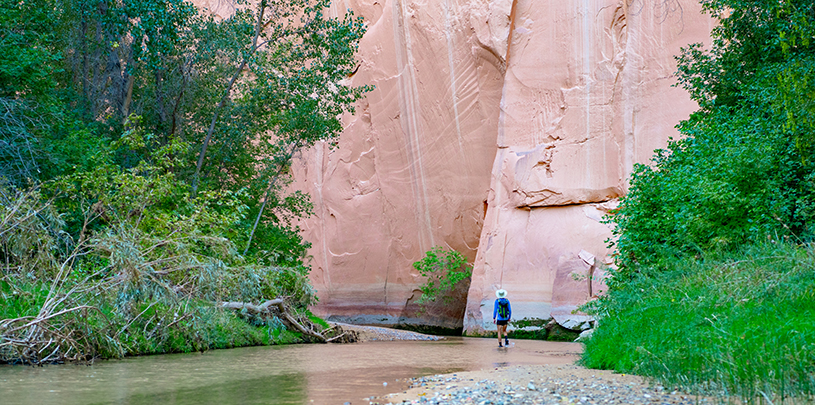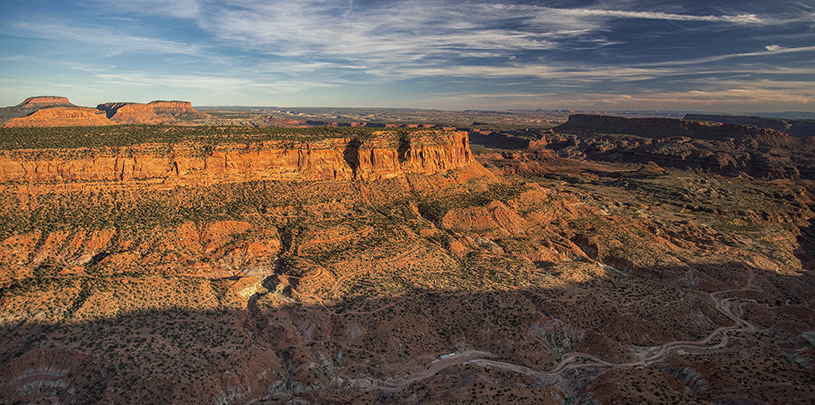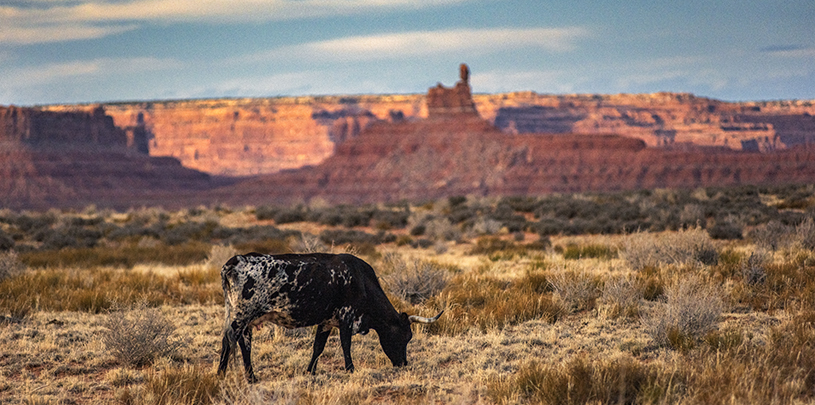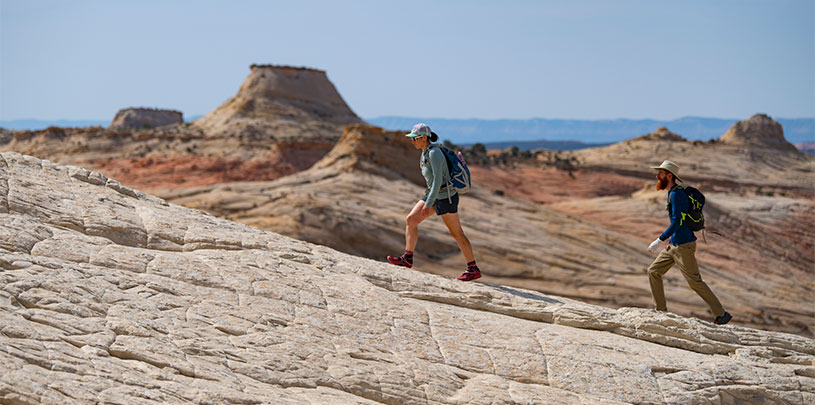
If the Judgment of Solomon had ended at the notorious decree to “divide the living child in two,” a decision made last month by the Trump administration could today be called Solomonic.
The federal government’s recent exercise of unwisdom has to do with cattle grazing in the canyon country surrounding the Escalante River within Grand Staircase-Escalante National Monument. Thanks to a complex grazing-privilege buyout the Grand Canyon Trust helped broker in the late 1990s, a good deal of this spectacular place has been free of cattle for two decades. But last summer, with no explanation, the federal government announced plans to entirely reverse the 1999 deal and reopen all those lands to grazing.
READ: John Leshy’s New York Times opinion piece on the reversal, “A Trump Plan Breaks a Great Deal for Ranchers and Park Lovers” ›
After the Trust and many others objected, the government announced last month in its final plan for managing the monument that the narrow ribbon carved by the Escalante River would mostly remain off-limits to grazing, but ranching would resume on every other acre touched by the two-decade-old deal. At first glance, one might think this decision charts a middle course, but in truth, it divides the living child in two.
Why? Because upending the grazing deal made in 1999 promises to make the whole landscape suffer in at least two different ways.
The Escalante River and canyon country around it are in for trouble.

The first problem is that the decision directly spells bad news for the canyons of the Escalante. The new plan reopens to grazing about 27,000 acres, nearly 90 percent of the lands closed by the 1999 deal. The decision also restores to full-time grazing nearly 15,000 acres of “forage reserves” created in 1999. These were areas meant to be grazed only rarely, with the aim of saving other places from ruin during emergencies, such as severe drought.
Taken together, these 40,000+ acres of fragile desert overlap or abut to some degree virtually all the tributaries to the Escalante River in the national monument: Death Hollow, Sand Creek, Boulder Creek, Deer Creek, Steep Creek, The Gulch, Horse Canyon, and Phipps Wash. While most of these oft-dazzling side canyons are already open to grazing in places, it is no blessing for these delicate lands to be trampled and chewed up, whether for the first time in two decades (as will be true for most areas) or simply by larger herds of cattle (as may be true for some places).
These herds’ use of the upstream canyons as sewerage is also no blessing for the Escalante River. On that score, the federal government’s new plan will also create two “water gaps” up to an eighth of a mile wide to allow cattle to directly “access” the river. Exactly how this will work on the ground is yet unclear, but it seems sure to unleash cattle into the river in at least two places. And then someone has to keep them from trespassing into the reaches of the river that remain closed to grazing on paper.
The Trump administration has sounded the death knell for grazing buyouts.
The second problem is institutional, but it is one with practical consequences. The Escalante River deal came about two decades ago because level-headed folks concluded it was the best solution to a thorny question of how to manage a splendid stretch of public lands. To ease the financial burdens facing ranchers who were ready and willing to relocate and retire their grazing businesses, the Trust raised and put up hundreds of thousands in compensation. Now, by undoing the deal without rhyme or reason, the Trump administration has forewarned conservationists never again to fund this sort of grazing buyout. And that’s a problem for ranchers as much as conservationists, for in terrain that’s especially hard to graze but especially valuable to protect from grazing, conservation buyers are liable to offer the best deal, if not the only deal, to ranchers who have had enough.
READ: Working with Ranchers to Protect Public Lands ›
The next crop of ranchers who want to try their hand on the newly reopened allotments in Grand Staircase-Escalante, for example, will get their grazing privileges almost gratis from the federal government, courtesy of the American taxpayer. But if those ranchers make serious financial layouts trying to make ends meet only to see their businesses go the way of their predecessors’, without conservation buyers in the market for grazing privileges, it will be much harder — impossible perhaps — for these ranchers to avoid losing their shirts if they conclude grazing in the canyons is a bad idea.
Isn’t it a welcome outcome that the Escalante River will remain closed?
It is true that keeping the river closed to grazing is a better outcome than the complete reversal of the 1999 deal that the Trump administration proposed last summer. There are probably folks in the federal government to thank for walking the decision back from the brink. But I can’t buy the Panglossian view that the last-minute choice to back off of the all-out grazing proposal is cause for boisterous celebration. After all, the question of disturbing any part of the 1999 deal — a sensible, negotiated outcome that all pragmatic thinkers endorsed — never should have been on the table. And the consequences of rolling back much (though not all) of the deal will be severe.
Can the Trump administration’s decision be undone?
Reversing the anti-buyout policy embedded in the Trump administration’s recent decision will be difficult, since it will take an act of Congress to again give grazing buyouts durability. Legislation is pending to do just that, and perhaps the folly of sacrificing the Escalante canyons to this administration’s political caprice will motivate Congress to finally act.
Likewise, judicial intervention will probably be needed to restore the Escalante River deal in the short term. To that end, our first line of recourse is our existing lawsuit against the Trump administration under the Antiquities Act, for in that case we’re seeking an order from the court not only to undo the proclamation that downsized Grand Staircase-Escalante but also to undo the new management plan resulting from that proclamation.
While the situation we now face is grim, there is still time to convince the federal government that our 1999 grazing buyout and the places it protected should be treated as indivisible. And that’s what we aim to do.




